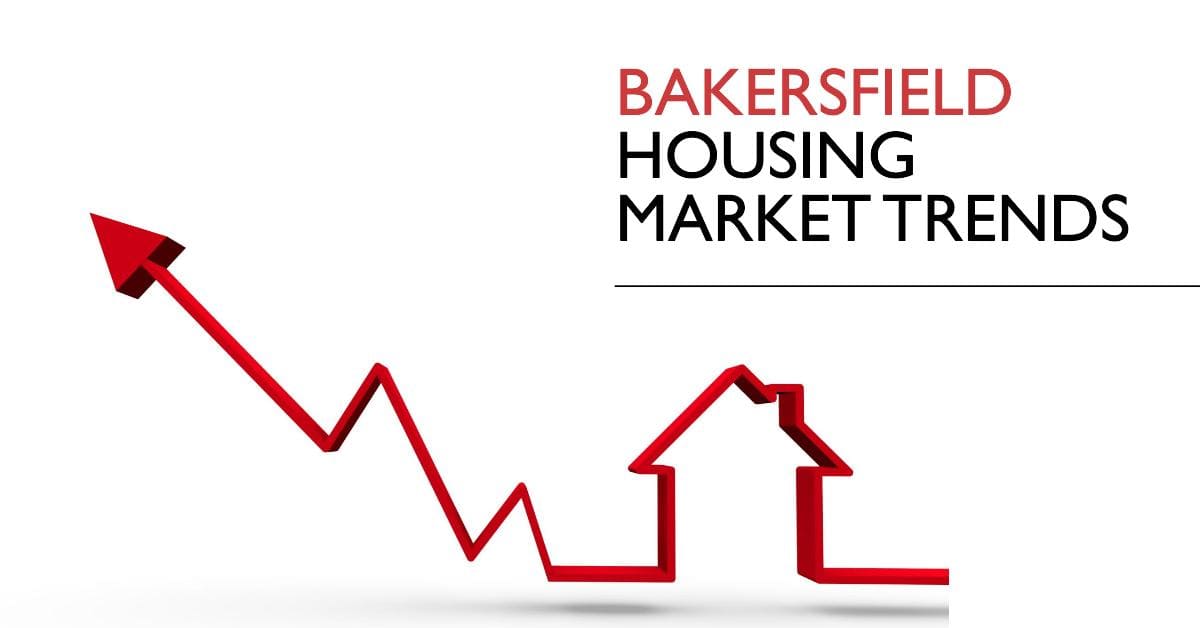If you're wondering about the current Bakersfield housing market trends, here's the scoop: As of January 2025, the market is somewhat competitive. The median sale price for a home in Bakersfield is around $410,000, which is up 5.1% compared to last year. While prices have increased, the number of homes sold has decreased slightly, and homes are staying on the market longer. Let's dive into the details and see what these trends mean for buyers and sellers like you.
Table of Contents
Current Bakersfield Housing Market Trends:
Home Sales
The number of home sales is a key indicator of the overall health of the housing market. In Bakersfield, we've seen a slight dip in the past year. Here's the breakdown:
- According to Redfin, in January 2025, there were 210 homes sold in Bakersfield.
- This is a 12.5% decrease compared to the 240 homes sold in January of the previous year.
This decrease in home sales could indicate several things:
- Lower demand from buyers due to factors like higher mortgage rates.
- Limited inventory of homes available for sale.
- Hesitation from sellers to list their homes, perhaps waiting for more favorable market conditions.
Home Prices
Despite the decrease in home sales, home prices in Bakersfield have continued to rise. Here's what you need to know:
- The median sale price of a home in Bakersfield in January 2025 was $410,000.
- This represents a 5.1% increase compared to the median sale price in January of the previous year.
- The median sale price per square foot is $237, which is up 7.7% since last year.
These figures suggest that while fewer homes are being sold, the demand for housing in Bakersfield is still strong enough to push prices upward.
Are Home Prices Dropping?
While the overall trend is upward, it's important to look at other indicators to get a complete picture. One such indicator is the percentage of homes with price drops.
- In January 2025, 26.7% of homes in Bakersfield had price drops.
- This is a 5.9% increase compared to the previous year.
This suggests that some sellers are finding it necessary to reduce their asking prices in order to attract buyers. This could be due to overpricing initially, or it could indicate that buyer resistance is growing at current price levels.
Comparison with Current National Median Price
To put Bakersfield's home prices in perspective, let's compare them to the national median price.
- The national median sale price in December 2024 was $407,500.
- This represents a 6% year-over-year change.
- Bakersfield's median sale price of $410,000 is 2% lower than the national average.
This comparison shows that Bakersfield's housing market is relatively in line with the national market. Bakersfield is still an affordable option compared to many other parts of California.
Housing Supply
The housing supply, or inventory of homes for sale, plays a crucial role in determining market dynamics. A low housing supply typically favors sellers, while a high supply favors buyers.
Unfortunately, the exact inventory numbers for Bakersfield specifically weren't available in this dataset. However, the fact that homes are staying on the market longer (50 days compared to 35 days last year) suggests that the housing supply may be increasing slightly.
Is It a Buyer's or Seller's Housing Market?
Determining whether it's a buyer's or seller's market involves looking at several factors, including:
- Sale-to-List Price Ratio: This ratio compares the final sale price to the original list price.
- Homes Sold Above List Price: The percentage of homes that sell for more than the asking price.
- Days on Market: How long homes stay on the market before being sold.
Here's how Bakersfield fares in these categories:
- Sale-to-List Price: 98.8% (-0.66 pt year-over-year)
- Homes Sold Above List Price: 25.7% (-6.0 pt year-over-year)
- Median Days on Market: 50 (+15 year-over-year)
Based on these numbers, I'd say the Bakersfield housing market is slightly leaning towards a buyer's market, but is still overall somewhat competitive. Here's why:
- The sale-to-list price ratio is slightly below 100%, indicating that homes are, on average, selling for a bit below the asking price.
- The percentage of homes sold above list price has decreased, suggesting that bidding wars are becoming less common.
- The increased days on market shows that homes are taking longer to sell, giving buyers more time to consider their options.
Market Trends
Beyond the numbers, it's important to understand the broader trends shaping the Bakersfield housing market. Some key trends include:
- Migration Patterns: People are still moving to Bakersfield from larger metros like Los Angeles and San Francisco, likely seeking more affordable housing. However, many Bakersfield residents are looking to move to places like San Luis Obispo, Portland, and Denver.
- Increased Price Drops: More sellers are having to reduce their asking prices to attract buyers.
- Longer Days on Market: Homes are staying on the market longer, giving buyers more negotiating power.
Impact of High Mortgage Rates
One of the biggest factors influencing the housing market right now is mortgage rates. Currently hovering around 7% (as of February 2025), these rates have a significant impact on affordability.
- Higher mortgage rates mean that buyers have to pay more each month for their mortgage, which can reduce their purchasing power.
- This can lead to lower demand for homes, which can put downward pressure on prices.
- Many potential buyers may be delaying their home purchases until rates come down.
Here's a simple table summarizing the key metrics:
| Metric | January 2025 | Year-over-Year Change |
|---|---|---|
| Median Sale Price | $410,000 | +5.1% |
| Number of Homes Sold | 210 | -12.5% |
| Median Days on Market | 50 | +15 |
| Sale-to-List Price Ratio | 98.8% | -0.66 pt |
| Homes Sold Above List Price | 25.7% | -6.0 pt |
My Thoughts
Based on these trends, my take is that the Bakersfield housing market is in a transitional phase. While prices are still up compared to last year, the market is showing signs of cooling down. The increase in homes with price drops and the longer days on market suggest that buyers are becoming more cautious.
Given the current mortgage rate environment, I expect this trend to continue in the coming months. While I don't anticipate a major crash in home prices, I do think we'll see a more balanced market with less intense competition among buyers.
What Does This Mean for You?
If you're a buyer, this could be good news. You may have more negotiating power and more time to find the right home. Don't rush into a purchase, and be sure to shop around for the best mortgage rates.
If you're a seller, it's important to be realistic about your asking price. Don't overprice your home, and be prepared to negotiate with buyers. Consider making improvements to your home to make it more attractive to potential buyers.
Bakersfield Housing Market Forecast: What to Expect in 2025 and Beyond
Wondering what's going to happen with the Bakersfield housing market in the near future? Based on the latest projections, the Bakersfield, CA housing market is expected to see moderate growth in 2025, with Zillow predicting a 3.9% increase in home values by the end of the year. This growth, though, needs a detailed exploration for us to plan our next move.
Let's dive deeper into what the numbers suggest and what it might mean for you.
What the Experts are Saying:
Zillow's latest MSA Forecast paints an interesting picture of the Bakersfield real estate scene. Here's a breakdown of what they're predicting:
- Near-Term (January 2025): A 0.4% increase in home values.
- Next Quarter (March 2025): A further increase, reaching 1.1%.
- End of Year (December 2025): An overall increase of 3.9%.
Here is a summary of the data for a better view:
| Forecast Period | Predicted Home Value Change |
|---|---|
| January 2025 | 0.4% |
| March 2025 | 1.1% |
| December 2025 | 3.9% |
- Source: Zillow MSA Forecast, December 2024.
Bakersfield vs. Other California Markets: How Does it Compare?
It's always helpful to see how Bakersfield stacks up against other major California cities. Here's a comparison of Zillow's forecasts for some key areas, which I have compiled from their data:
| Region | Predicted Home Value Change (December 2025) |
|---|---|
| Bakersfield, CA | 3.9% |
| Los Angeles, CA | 1.8% |
| San Francisco, CA | 0% |
| Riverside, CA | 3.2% |
| San Diego, CA | 3.6% |
| Sacramento, CA | 1.1% |
| San Jose, CA | 0.2% |
| Fresno, CA | 2.8% |
As you can see, Bakersfield is projected to experience stronger growth than many of the larger, more expensive markets like Los Angeles and San Francisco. It's also pacing ahead of its neighbor Fresno. This could indicate that Bakersfield offers a more affordable entry point into the California housing market, leading to increased demand and price appreciation.
Will Home Prices Drop in Bakersfield? Is a Crash Coming?
While predicting the future is impossible, the current data doesn't point to a significant price drop or a market crash in Bakersfield. The forecast suggests steady, moderate growth. Of course, unforeseen economic events could always change the trajectory, so it's crucial to stay informed.
Looking Ahead for the Bakersfield Housing Market in 2026
Based on current trends and the projected growth for 2025, I anticipate that the Bakersfield housing market will continue to see moderate appreciation in 2026. Assuming interest rates don't skyrocket and the local economy remains stable, a growth rate of 2-4% seems plausible.
Factors Influencing the Market
Several factors are likely to play a role in shaping the Bakersfield housing market:
- Interest Rates: Mortgage rates have a huge impact on affordability.
- Job Growth: A strong local economy attracts new residents and drives housing demand.
- Inventory Levels: The number of homes available for sale will influence price competition.
- Population Growth: An increase in population adds to housing needs.
Final Thoughts
The Bakersfield housing market appears poised for continued, albeit moderate, growth in the coming year. While a crash seems unlikely based on current data, potential buyers and sellers should always do their research, consult with local real estate professionals, and consider their individual circumstances before making any major decisions.
Should You Invest in the Bakersfield Real Estate Market?
Bakersfield Home Appreciation: A Decade of Above-Average Growth
Over the last ten years, Bakersfield has experienced a noteworthy trend in home appreciation rates, surpassing the national average. According to data from NeighborhoodScout, the cumulative appreciation rate for homes in Bakersfield during this period stands at an impressive 110.25%. This places Bakersfield's real estate market in the top 30% nationwide in terms of overall appreciation.
Breaking down the figures, Bakersfield has seen an annual average house appreciation rate of 7.71% over the past decade. This consistent and above-average growth reflects the city's robust real estate market, making it an attractive destination for homeowners and investors alike.
Population Growth and Trends
Bakersfield, with its strategic location in California's Central Valley, has experienced consistent population growth over the years. The city's population trends indicate a steady increase, which is a positive sign for real estate investors seeking areas with a potential demand for housing.
- Population Dynamics: The city's diverse population contributes to a dynamic real estate market, catering to various housing preferences.
- Migration Patterns: Analyzing migration patterns reveals a consistent influx of residents, creating a stable demand for housing options.
Economy and Jobs
The economic landscape of Bakersfield is a crucial factor for real estate investors. Understanding the city's economy and job market is pivotal for making informed investment decisions.
- Job Opportunities: Bakersfield's economy is anchored in industries like agriculture, oil, and manufacturing, providing a diverse range of job opportunities.
- Employment Stability: The stability of key industries contributes to a resilient job market, fostering economic stability that positively impacts the real estate sector.
Livability and Other Factors
Livability is a key consideration for both residents and investors. Factors such as amenities, education, and safety contribute to the overall appeal of the Bakersfield real estate market.
- Amenities: Bakersfield boasts a range of amenities, including parks, cultural attractions, and recreational facilities, enhancing the overall quality of life for residents.
- Educational Institutions: The presence of reputable educational institutions is a crucial factor, attracting families and students, positively influencing the demand for housing.
- Safety Measures: A focus on safety and community well-being adds to the city's appeal, making it an attractive destination for potential real estate investors.
- Affordability: The cost of living in Bakersfield is significantly lower than the California average, attracting businesses and residents alike.
Rental Property Market Size and Growth
For investors interested in rental properties, analyzing the market size and growth potential is essential to maximize returns on investment. The city's housing landscape is diverse, catering to both homeowners and renters, with 59.27% owning their residences and 40.73% opting for rental accommodations.
- Market Size: Bakersfield's rental property market has shown substantial growth, with a diverse range of rental options catering to various tenant demographics.
- Rental Demand: Factors like job opportunities and population growth contribute to a sustained demand for rental properties, creating a lucrative market for investors.
- Single-family Detached Homes: When it comes to housing types, single-family detached homes dominate the Bakersfield real estate scene, constituting a significant 71.35% of the city's housing units. Other prevalent housing options include large apartment complexes or high-rise apartments (13.40%), duplexes, homes converted to apartments, or other small apartment buildings (9.06%), and a small percentage of row houses and other attached homes (3.39%).
Other Factors Related to Real Estate Investing
Several additional factors play a role in the attractiveness of the Bakersfield real estate market for investors.
- Infrastructure Development: Ongoing and planned infrastructure projects can positively impact property values, making it a promising prospect for long-term investors.
- Market Affordability: Bakersfield's real estate market offers affordability compared to some other California cities, making it an enticing option for investors looking for reasonable entry points.
In summary, the Bakersfield real estate market presents a compelling opportunity for investors. With a growing population, diverse economy, and favorable livability factors, the city offers a robust environment for real estate growth and profitability.
Read More:




